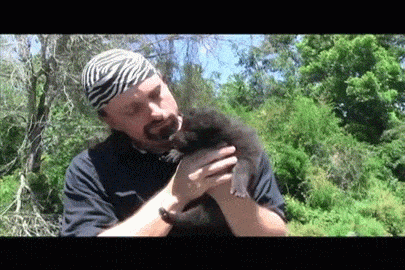You can take the wolf out of nature but you can’t take the nature out of the wolf.
Wolves tend to howl the most during the twilight hours, usually before the adults go and hunt and on their return. Wolves also tend to howl more during their breeding season and throughout rearing of pups. The wolf pups in turn will begin to howl and will be provoked into howling sessions quite easily.
Under ideal conditions, a wolfs howl can be heard from as far away as 10 miles (16 kilometres). A wolf howl can last between 3 and 11 seconds at a time.
In addition to howls, wolves can also produce whimpers, growls, barks and squeaks. Whimpering tends to serve as either a submissive or friendly greeting sound, since young wolf pups and wolves attempting to appear submissive often whimper.
A baby wolf gives a contented howl after finishing his bottle of milk. Likely this is the first of many to come.
Wolves tend to howl the most during the twilight hours, usually before the adults go and hunt and on their return. Wolves also tend to howl more during their breeding season and throughout rearing of pups. The wolf pups in turn will begin to howl and will be provoked into howling sessions quite easily.
Under ideal conditions, a wolfs howl can be heard from as far away as 10 miles (16 kilometres). A wolf howl can last between 3 and 11 seconds at a time.
In addition to howls, wolves can also produce whimpers, growls, barks and squeaks. Whimpering tends to serve as either a submissive or friendly greeting sound, since young wolf pups and wolves attempting to appear submissive often whimper.
A baby wolf gives a contented howl after finishing his bottle of milk. Likely this is the first of many to come.
Check out an adorable baby wolf howling.
Baby wolf first howl





That is a beautiful sound. Love it.
Absolutely adorable! Thanks.
I love wolves soooo much and these babies are adorable!!!!!